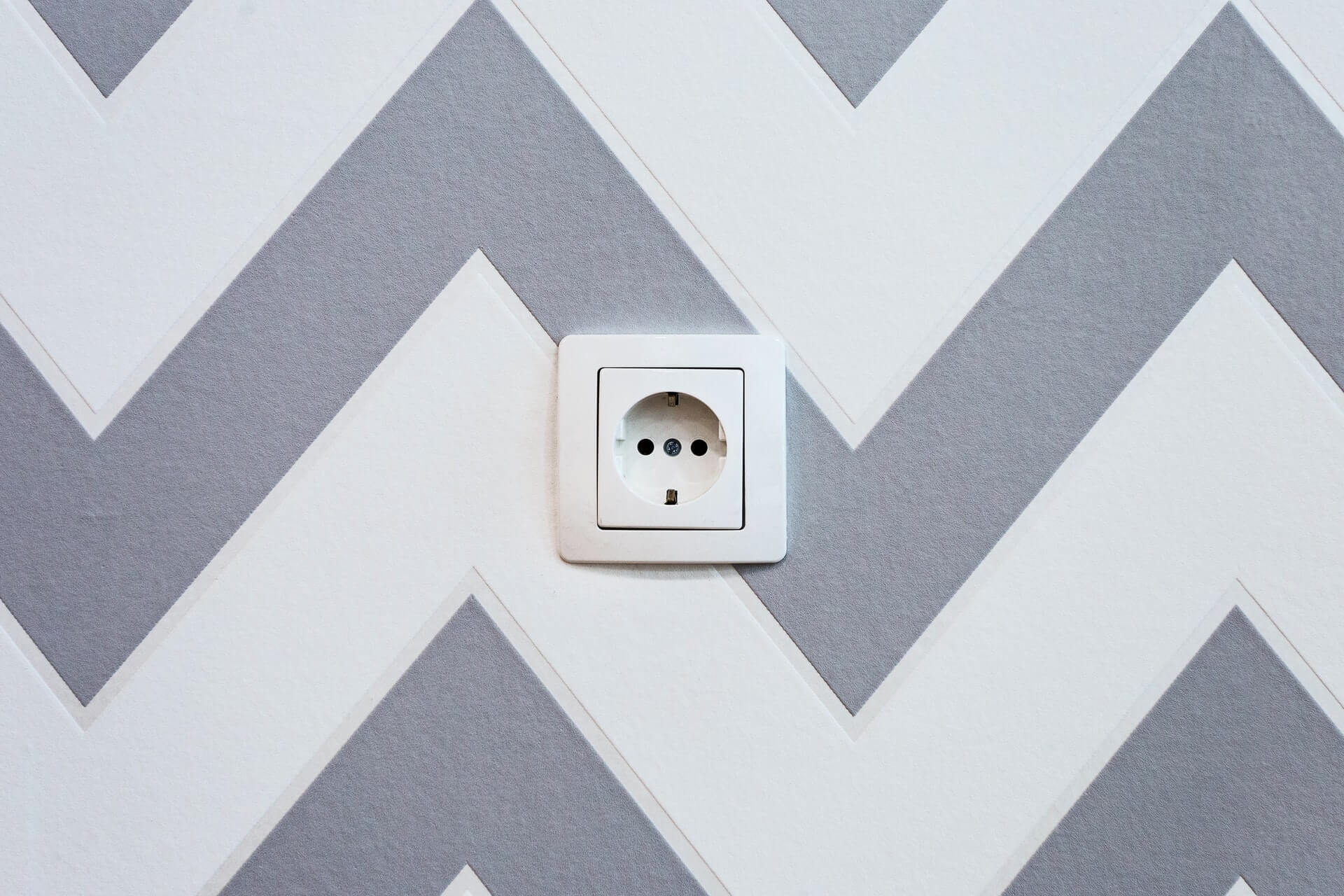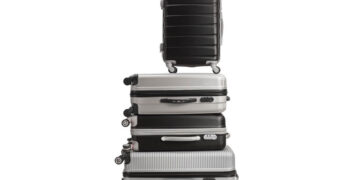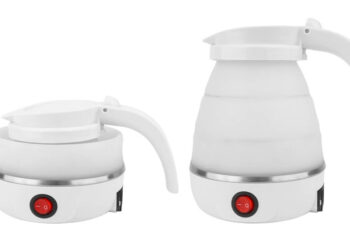Wander and Experience is reader-supported. When you buy through links on our site, we may earn an affiliate commission.
One of the essentials of international travel, outlet adapters have long been a critical packing consideration when traveling across borders. The lifestyle of modern travelers has only increased the demand for quality outlet adapters, with mobile phones, tablets, laptops, cameras, portable batteries, and more requiring charging in hotel rooms or airport terminals.
With travelers spoiled for choice, the selection of adapters is vast, with numerous styles and varied qualities available. Unfortunately, experienced international travelers often have a small box of outlet adapters that they have picked up over a career on the road, with flaws in design or limits in features resigning them to the box rather than the travel bag.
If you are taking your time to invest in an outlet adapter, it’s best to find one that fits your needs, considering the devices you will need it for and how you’ll use it.
Things to Consider Before Your Purchase

Are you looking for an outlet adapter or voltage converter?
Often confused with a voltage converter, an outlet adapter is typically a small plastic device that plugs into an electrical outlet to adapt to the foreign country’s outlet, with different countries using different shapes and styles as a standard. The adapter will pass whichever voltage comes from the wall outlet through the adapter.
Alternatively, a voltage converter is a more complex device that converts the voltage from its source to the required voltage for your electronic device or appliance. For example, many countries worldwide operate on a higher 220-240V compared to the United States and other countries that are wired for 120V. A voltage converter can convert voltage to a higher or lower level depending on the source and the device receiving the power.
Using any type of electronic device, especially motorized ones, on the wrong voltage can cause them to at best temporarily malfunction, and at worst, completely burn out the motor, breaking them and requiring you to buy a replacement.
The good news is that devices that use a USB charger and many laptop and camera chargers can receive a wide ranger of voltage, often from 110-240V, limiting the need for a converter. However, those traveling with electric razors, hairdryers, portable steamers, and small kitchen appliances will need to consider converters. This is because the devices have internal motors or heating elements that require conversion to avoid burning out.
Some outlet adapters also act as a voltage converter, so be sure to look specifically for the feature if needed, as it can save you money as well as space in your luggage.
Know the voltage of the country you are traveling to and the voltage your devices accept.
- Single-voltage devices will only accept a single voltage, such as 120V, or 240V
- Dual-voltage devices can toggle between different voltages like 120V/220V
- Multi-voltage devices can accept a range of voltage such as 100V-240V
What types of devices and how many will you use need to plug in simultaneously with the adapter?
Most travelers today are looking to charge mobile devices, cameras, and laptops, with USB Type A (still the most common standard) and USB Type C (gaining popularity and the next standard) ports being essential needs along with a standard electrical outlet for other uses.
Adapters are available with multiple USB ports, allowing various devices to be charged simultaneously from one compact adapter. Those who may need to use more than one item with a standard plug at the same time should consider a multi-socket adapter or multiple adapters.
Do you need standard outlets or USB ports?
Modern outlet adapters often offer a combination of standard outlets similar to wall outlets at your home, though there will also be options for USB and/or USB-C ports. Those looking to charge phones, tablets, and headphones can save space by minimizing the number of standard outlets on their adapter, with small sizes offered from
With the recent trend of devices adopting USB Type C, it’s best to look for devices with a combination of both, though most adapters on the market still do not include USB Type C at the time of writing.
Do you need an extension cord?
Most adapters sold at the moment are made to be as compact as possible, which is excellent for those looking to pack light, though it can limit the features and flexibility. One feature that comes in handy for those that need their outlet nearby when in use is a built-in extension cord, which some adapters include.
Make sure the outlet adapter will be compatable at your destination.
Generally, four outlet types make up the majority of outlets worldwide, among 15 different ones used globally. These are the Type A/B (US and Japan; Type C (Europe, South America, Asia); Type G (UK); and Type I (Australia and China), just to name a few of the regions and countries that the outlet’s types are used in.
Before you travel, it’s worth confirming what outlet type is used in your destination. Hotels and airports in more frequently visited countries will typically use a combination of the four adapters mentioned above. However, the fewer tourists or international travelers a country receives, the more essential it is to research before you travel.
Adapters with built-in plugs vs. attachable ones
One of the most common designs at the moment is adapters that offer sliding plugs that you can push out with a button. These are convenient for compact packing and typically include the most common three or four outlet types. These are an excellent investment for most international travel and reduce the chance of losing one of the many attachments that come with multiple-piece adapters.
Adapters that feature multiple attachments are best for those with more exotic destinations planned, with more flexibility of having the ability to have more compatibility with different outlets since the pieces don’t need to fit into one compact device. The downside is that this could include many parts that are easy to lose and can take up more packing space for multi-country itineraries.
How much wattage do you need?
Without going too deep into the scientific aspects of electricity, the wattage rating for a converter measures the amount of electricity an adapter can safely deliver to your device.
Each electric device will pull a specific wattage used at different levels. For example, laptop computers are typically around 60 watts and even less if they are in sleep mode, while a hairdryer would pull between 800 to 1800 watts.
Charging laptops, phones, cameras, and portable batteries will rarely be an issue for a travel adapter. However, if you plan on charging portable steamers, hairdryers, or any other electronic devices, it’s worth ensuring that the adapter will meet your needs by confirming the maximum wattage in the product details if you want it to last.
Buy a Quality Adapter for the Long Term
From a sustainability and personal budget perspective, investing in a quality travel power adapter avoids the situation of having to replace a poor quality one after only a couple of trips. While you may be able to save around 50% on similar models sold at lower prices, you will run the risk of having to replace them after limited use, resulting in spending more than you would have on a quality adapter.
Design Options: Cube vs. Separate Adapters vs. Power Strip
Three standard designs are prevalent among current power adapters, with advantages to each design.
The cube design is generally the most feature-rich and easiest to carry, with a small cube containing a combination of USB ports and a standard outlet. The available plugs all tuck into the device, allowing for a small profile that’s very easy to pack. In addition, this design is perfect for charging devices by USB cable, with multiple ports allowing for simultaneous charging.
One downside to the design is that heavy plugs that weigh it down, such as apple’s MacBook charger, can make it difficult for the adapter to stay plugged into loose wall outlets.
Another typical design is the separate outlet adapters for each outlet type. These come as either a small bag of individual pieces or a cube where the adapters plug into each other for storage. The key benefits of this design are flexibility and savings. Often the cheapest design option, the separate adapters make for light packing and are at lower risk of breaking or losing a single adapter as you won’t need to replace the entire set every time.
The downside of the separate adapter design is the limited features. You won’t be able to plug your charging cables into it directly, so you will still need to pack wall outlets for phones or cameras. The lack of USB ports also doesn’t allow for simultaneous charging, requiring extra planning while traveling to rotate through all your devices for charging.
Finally, the third most popular travel adapter design is the power strip adapter. Similar in style to the typical power strip found behind a TV or desktop computer, the power strip design offers a combination of flexibility and features. Many offer a variety of multiple standard outlets and USB ports, with some even including built-in voltage conversion, making the most comprehensive adapter style available.
The downside? Naturally, the size of a power strip adapter design will be a turnoff to travelers that prefer to pack light. Those looking to limit the weight of their bag, especially considering the idea of carrying in a carry-on bag, will find the size and weight inconvenient for travel.
W&E Tip: Electrical Tape Can Help You Sleep
Nearly all outlet adapters sold these days feature an indicator light to show that the adapter is receiving power when plugged in. While this may come in handy in situations where you are having trouble finding a working outlet, for sensitive sleepers, these lights can seemingly light up a whole hotel room with blackout curtains.
Test out your adapter at your home in the dark, and use a tiny dot of black electrical tape to cover the indicator light to help you avoid another reason to get a lousy night of sleep when jet-lagged and any slight disturbance can keep you awake.
Best Overall: Epicka Universal Travel Adapter
Those looking for the best mix of features in an adapter covering 150 countries will find an ultra-portable and feature-rich adapter in the Epicka Universal Adapter. The design has the prongs consolidating into a small cube. For most travelers who only carry cables for phones, earphones, tablets, cameras, and laptops, the Epicka helps to limit your packing list to cables only with six options for charging devices simultaneously. Great for those looking to pack light and never forget the correct adapter, compared to the multi-piece adapter sets, that runs the risk of bringing the wrong one.
Key Features
Flexible Charging: The adapter features 4 USB Ports, 1 USB TYPE C, and 1 AC Socket to charge six devices simultaneously with high speed.
Worldwide Coverage: The travel adapter covers more than 150 countries with US/EU/AU/UK plugs.
Ultra Portability: Compact with a simple cube design, the adapter simplifies packing for a wide range of devices.
Best Budget-Friendly Adapter: Ceptics International Worldwide Travel Plug Adapter
If simplicity is what you are looking for, this adapter set from Ceptics contains separate plug adapters for each of the most common plug types, making it compatible with over 150 countries. Great for those looking to simplify their packing, take only one with you, or take them all for multi-country trips with the included small pouch. The adapters don’t have USB charging ports, so you will still need to carry charging plugs in addition to cables. With one of the lowest prices available for a complete set, the adapter offers excellent value to those on a budget.
Key Features
Worldwide Coverage: The travel adapter covers more than 150 countries with US/EU/AU/UK plugs.
Small and simple design: Bring only the adapter or adapters you need, minimizing extra weight in your bag.
Best Compact Multi-outlet Adapter: Conair Travel Smart All-In-One Adapter
Most adapters featuring multiple outlets come in the form of a power strip, which can be a packing burden for those hoping to pack light. However, Conair’s Travel Smart All-In-One Adapter features a compact design that still provides room to plug in three electric devices while charging from the USB at the same time. A great option for travelers looking to charge a camera or drone battery, laptop, and phone simultaneously.
Key Features
Multi-Outlet: Compact design for a multi-outlet adapter that allows three devices to charge simultaneously.
Worldwide Coverage: The travel adapter covers more than 150 countries with US/EU/AU/UK plugs.
Best Power Strip Adapter: BESTEK Universal Travel Converter
This full-featured travel adapter offers three standard AC outlets, four USB Type-A ports, and a voltage conversion of 100-240V to 110V. With a five-foot-long cord, the power strip design of the BESTEK Universal Travel Converter provides flexibility for those looking to set up a mobile office anywhere. However, each outlet is rated up to 250 Watts, so the BESTEK will not work for a hairdryer or other high-wattage devices.
Key Features
Voltage Conversion – 100-240V to 110V conversion.
Worldwide Coverage: The travel adapter covers more than 150 countries with US/EU/AU/UK plugs.
Best MacBook Travel Adapter: Twelve South Plug Bug Duo
Designed to overcome the challenges of using a MacBook charger with other travel adapters, the Twelve South Plug Bug Duo is the solution to the problem created when combining a MacBook charger with an adapter, resulting in the weight to pull the adapter out of the wall outlet. In addition, the small adapter makes for efficient packing and charging with two additional USB Type-A charging ports. The device comes with five different snap-on plugs, allowing for a sturdy connection to the outlet when plugged in.
One key consideration to highlight, while the Plug Bug Duo offers a small and lightweight solution for MacBook owners looking to charge other devices through USB, it does not include any standard AC outlets, making it less flexible compared to other designs.
Key Features
Multi-Outlet: Compact design for a multi-outlet adapter that allows three devices to charge simultaneously.
Worldwide Coverage: The travel adapter covers more than 150 countries with US/EU/AU/UK plugs.


















